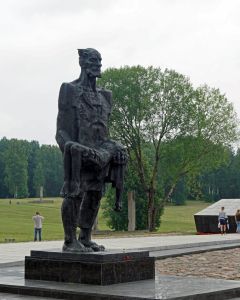In 2007 I was travelling through Kyrgyzstan when I discovered that one of the the lessons I was taught in geography at school was wrong. I noted the mistake in my description of the journey but only recently learnt that there is terminology to describe the feature. In my journey log I noted:
We also travelled near the Chuy River (pronounced: "chewy") which our guide said was the second longest in Kyrgyzstan. In one respect this river was unlike any I had seen or heard of. I have always thought of rivers as rising in high ground and eventually finding their way to the sea. However, the Chuy River flows into Kazakhstan where it eventually disappears in the steppe.
Recently, I was reading an article which referred to an endorheic basin. Briefly, an endorheic basin is the end point of a rivers flow which is not another river or an ocean. This "unusual" feature of the Chuy River was explained to me when I was near the rivers origin in the Kochkor District of Kyrgyzstan. It then flows for more than 1000km through Kyrgyzstan and Kazakhstan where it eventually fades away into the steppe a little short of the Syr Darya River which flows to the Aral Sea (an endorheic basin). The Chuy is still unusual in the sense that it doesn't end at a body of water. It also passes withing a few kilometers of Issyk-Kul, an endorheic lake in Kyrgyzstan.
I have spoken to several people who also recall being taught this fallacious fact. I suspect that it is a true statement about rivers in England, and maybe even the United Kingdom but I do not remember any such qualifier when it was taught to me.
Postscript after a 16 year gap I recently returned to Uzbekistan to pick up the journey I had suspended in Tashkent and continued west through Samarkand, Bukhara and Khiva. While travelling between these cities we had cause to cross the Amu Darya river (historically known as the Oxus) and I learned due to the large-scale diversion of water it no longer reaches its historic terminus in the Aral Sea. This is part of why the Aral Sea is shrinking but it also means that, like the Chuy, the Amu Darya river just fades away into the desert. July 2023.






